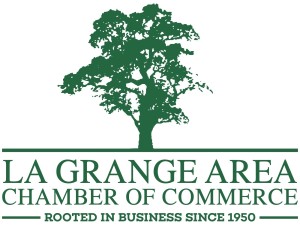Accelerate Your Business Growth with Advanced Sales Techniques
Tracking sales and revenue is a vital aspect of achieving business success. Companies aiming to stay ahead embrace modern technologies and adaptable methods to refine their processes. Leveraging tools for data analysis and AI-driven insights allows teams to operate with greater precision and focus. Agile approaches further enable businesses to adapt quickly and foster innovation within their operations. Such efforts enhance efficiency and create opportunities for informed decisions that drive growth.
Harnessing AI for Enhanced Revenue Tracking Efficiency
Incorporating AI-driven solutions into your revenue tracking systems can significantly enhance both accuracy and speed. By leveraging machine learning algorithms, you can predict revenue trends and monitor financial data with minimal human intervention, allowing for more precise forecasting. This technological advancement not only reduces the risk of errors but also enables real-time analysis, which is crucial for making informed business decisions. Imagine being able to adjust your strategies on the fly, optimizing your approach to minimize risks and maximize growth.
Enhancing Sales Data Management with Document Systems
Implementing a document management system for your sales data can significantly enhance organizational efficiency. By using tools for PDF to Excel conversion, you gain the ability to easily manipulate and analyze tabular data, offering a more versatile and editable format. This transformation allows you to leverage Excel’s powerful tools, such as formulas and pivot tables, to gain deeper insights into your sales performance. Once you have made the necessary edits and analyses in Excel, you can conveniently resave the file as a PDF, ensuring that your data remains secure and easily shareable.
Introduce Sales Tracking with Customizable Dashboards
To elevate your sales tracking capabilities, consider developing customizable dashboards that facilitate the swift visualization and analysis of essential sales metrics. By utilizing a dashboard software with an intuitive drag-and-drop interface, you can effortlessly create real-time visualizations without needing technical expertise. This approach not only boosts user engagement but also empowers your team to delve into data, uncovering deeper insights that drive informed decision-making. Customization features allow you to tailor the dashboard to highlight critical data points, identify trends, and spot anomalies, thereby enhancing your ability to respond quickly to market changes.
Get Familiar with Predictive Analytics for Sales Forecasting
Implementing predictive analytics software helps identify sales opportunities and risks earlier in the forecasting process. The technology examines past sales data, market trends, and economic factors to generate more accurate insights. It can highlight customer behaviors that improve conversion chances, enabling teams to focus their efforts strategically. Patterns such as the timing of follow-ups or the impact of product demonstrations may emerge, guiding tactical adjustments. These data-driven strategies refine processes and improve overall outcomes.
Utilizing Automation for Precise Sales Forecasting
Utilizing automated forecasting tools can significantly enhance your ability to predict future sales revenue with precision. These tools leverage historical sales data and current market trends to generate accurate forecasts, which are crucial for setting realistic sales targets. By automating the forecasting process, you not only save time and reduce manual errors but also gain valuable insights into potential revenue streams. This foresight enables you to allocate resources more effectively.
Aligning Analytics Dashboards with Organizational Objectives
To enhance your organization’s efficiency and growth, it’s crucial to tailor your analytics dashboards to reflect your specific business goals. By customizing dashboards in Google Analytics, you can focus on the metrics that are most relevant to your objectives, such as tracking revenue growth or conversion rates. This approach not only aids in making informed, data-driven decisions but also ensures that everyone in your team is aligned and working towards the same targets.
Adopt Agile Methodologies for Dynamic Sales Tracking
To effectively respond to the ever-changing demands of the market, adopting agile methodologies in your sales tracking systems is crucial. Agile practices emphasize flexibility and adaptability, allowing your team to swiftly adjust strategies based on real-time data and customer feedback. By setting short-term, achievable goals and conducting regular reviews, you can ensure that your sales processes remain aligned with current market trends.
Use Real-Time Data for Dynamic Pricing Success
Maximizing revenue potential often involves adopting dynamic pricing strategies based on real-time sales data. Analyzing market conditions and consumer behavior enables precise price adjustments to align with demand. During periods of high demand, such as special events, prices can be optimized to reflect increased consumer willingness to spend. This approach ensures businesses capture more revenue by staying responsive to market fluctuations. Tailored pricing strategies enhance profitability while meeting market needs.
Integrating advanced strategies into sales and revenue tracking systems boosts operational efficiency and supports growth. Leveraging technology and flexible approaches enables businesses to adapt and excel in competitive markets. Data-driven insights empower teams to optimize processes and make informed decisions. These efforts foster innovation and improve the ability to meet evolving demands. Businesses equipped with such tools are better positioned for long-term success.
Discover the vibrant community of La Grange, TX, where business meets opportunity. Visit La Grange Business Community to explore how you can thrive with us!

